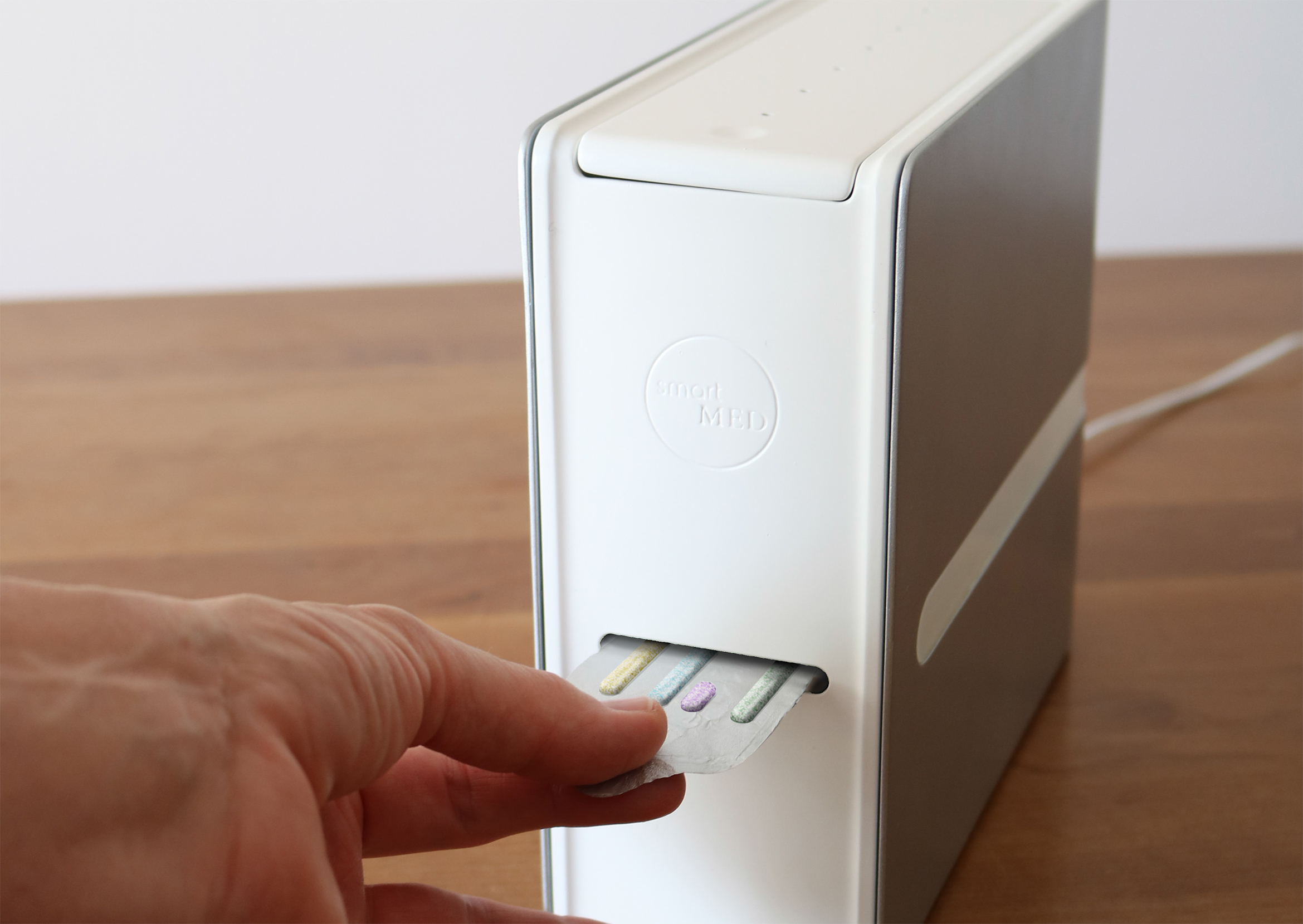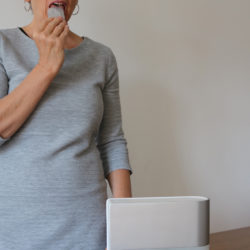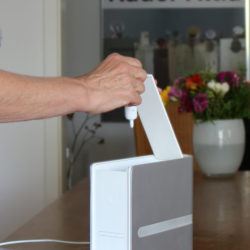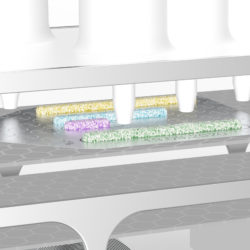Smart Medication
Description
‚Smart Medication' is a device to individualise medication delivery process. My scenario uses chronic diseases of old age as an example. Patients with a so-called ‚multimorbidity‘ often need to combine several different drugs every day. By using data recorded by each patient, the doctor can create individual therapy for the patient. The device is a 3D-printer that uses cartridges to print precise dosages of the medication on a carrier film. The drugs are in dispensed in form of fine-particle granulate, which is extruded from the cartridge premixed with gel as support material. Similar to a diagram, the printed stripes show how the dosage is changing depending on the body data. Every day, the patient receives an overview of the progress of his*her treatment with his*her medication. The printing device helps him not to forget his medication. The medication printer is operated via app. With the help of the app, the doctor can feed the treatment plan into the printer, monitor the progress of treatment and communicate with the patient. Pharmacological interactions can be avoided using Big Data and by the monitoring of the doctor. The patient can use his*her Smart Devices connected to his*her body to measure body data and share them with the doctor. Also, the app shows a notification on the mobile phone when a medication has been printed.What is the Topic?
My project deals with the possibilities of digitalisation of the health care sector. More precisely, it is a scenario for the application of Big Data and post-industrial processes in the pharmaceutical industry. In my scenario, an essential problem of 20th-century medicine is disrupted: The dosage of medication. The physical stress caused by incorrect medication and interactions can seriously damage the patient’s health. This can be avoided by better adjusting the dosage for each individual patient. The compliance of medication for chronic diseases in old age is about 50% for various reasons. Sometimes it is challenging for patients with chronic diseases to remember taking their medication. By individualising the medication, compliance can be improved due to a unique product. The Patient builds up more identification and trust for the prescribed drug. Impact My project is more than just a 3D-printer or a drug dispensing system. My idea is to restructure the whole system of drug therapy. This starts with the production process of drugs. These are produced industrially as pills in the same dosage for everyone, even though everyone has different physiognomic characteristics. Furthermore, my system is directed against an industry that is dominated by lobbying and profit-making and has lost sight of the patients. It makes use of the advantages of Quantified Self in a good way (the measurement of body data) and puts the patient back into the focus of healthcare.
Why does it look like this?
The printing device and the app are reduced to its essential functions. The device is designed following principles of universal design. My criteria were to create a device that is easy to use, e.g. the cartridges must be changeable by everyone. Through the window on the side, the printing process can be observed. I decided on the linear shape of the drug because it had to be able to be printed as accurately as possible. The linear arrangement allows for the most simple and precise way of dosage when 3D-printing medication. This results in a narrow and linear shape of the device wich that thus relates to the printing process itself. The linear shape distinguishes the device also from hobby 3D printers with square or round printing plates. It is designed to reference medical device design. The device should create confidence and not remind you of DIY-products or contemporary consumer electronics.
What is special?
Swallowing tablets can be very uncomfortable or even painful. Licking off the carrier foil - like a lid of a yoghurt cup - is a familiar, everyday gesture wich is not related to taking drugs. I turned taking medicine into a ritual that no longer has any negative connotations. The new shape of the medication as a printed stripe on foil is a particular quality of my project.
What is new?
I'm combining 3D printing with Big Data and applying these techniques to the pharmaceutical industry in an innovative way. Another new feature of my device is its handling. I've fundamentally changed the way medication usually appears. Usually, when pills need to be dosed individually, they have to be split in half or crushed with a knife. In contrast, my device makes a precise dosage of the active ingredients feasible.




